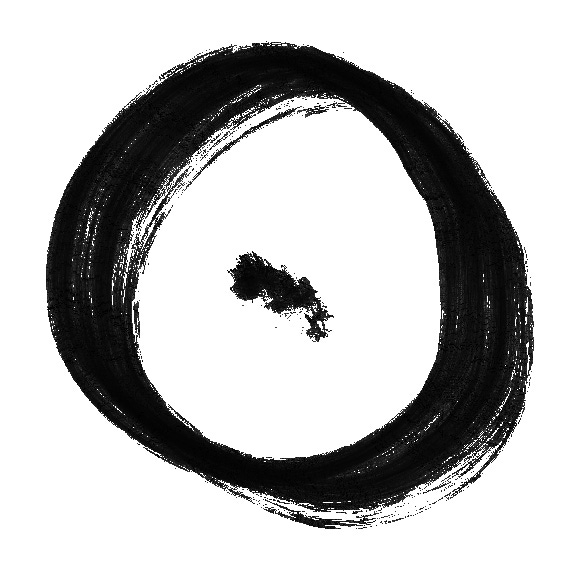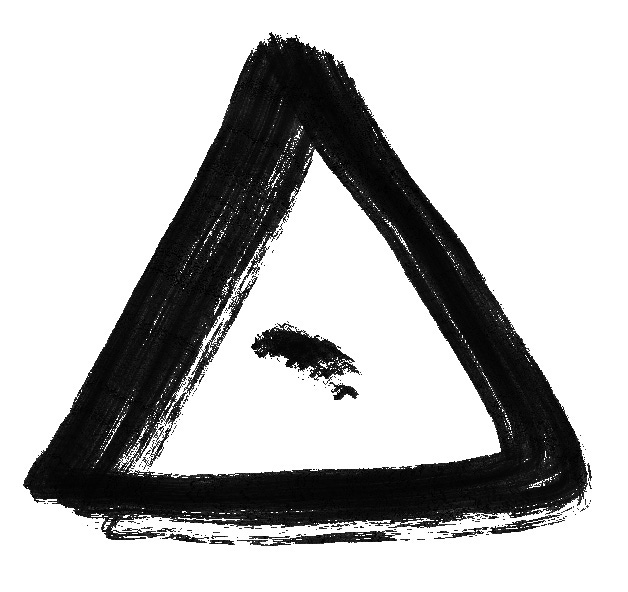My Musical Philosophy
At the core of my musical philosophy lies an abstraction, embellishment, and fusion of improvisation, drone, glitch, and noise that I call Om Di Tri. My musical practice embraces the meditative qualities of contemplative improvisation within experimental soundscapes, creating an environment for emotional and spiritual exploration.
Circle, Square, Triangle
The image at the top of this article represents the heart and soul of my artistic practice, my “musical philosophy”. It’s taken me a couple of decades to really solidify and distill my internal manifesto into this simple geometric glyph, but it’s representative of core concepts and approaches that have been central to my music for most of my life.
Let’s break it down.
Om
At the top of the triangle is Om, the first point of focus. This reminds me of the goal and the reason I pick up my guitar: to feed my spirit, not my ego. I don’t want to perform art, I want to create art, every time I pick up the instrument. More than that, I want to experience the art flowing through me, to become the art that is being created.
The book Zen Guitar by the late Philip Toshio Sudo pretty much changed my life when I read it. As Ben Sherman writes in the forward to the latest edition, reading Zen Guitar became a “before/after moment” in my life. I learned from Phil how to approach the studio as a dojo, or a “school, practice hall, and temple rolled into one.” My fingers on the fretboard became merely the physical component of a mind/body/spirit practice in music, art, and life. It was at this point that I began to see my passion for guitar as an integral part of my life, not something separate.
It was also this philosophy that allowed me to transfer my attention to the iPad as an instrument when cubital tunnel syndrome took away my ability to play guitar. It’s only in the last few years, thanks to Strandberg’s lightweight ergonomic guitars, that I’ve been able to return to my primary instrument, but the core philosophy remained with me throughout my predominantly electronic Mood481 period from 2013-2020.
Om is based in meditation and awareness, of observing the music flowing through me without judging or trying to direct it. My music eschews traditional forms and functional harmony in favor of environmental ambiance and flow in order to create an environment for emotional and spiritual exploration. It naturally follows that my musical output is more durational in nature than popular forms of music, simply because these things take time.
Di
The second point point of focus at the lower left of the diagram is Di, represented by the square die. This is aleatory, chance, indeterminacy, and randomness. It is embracing the unknown and the unexpected. In practice, it ranges from randomizing presets and scales, to using generative or physics-based instruments, to including environmental sounds.
By introducing chance, I can give up the need to control everything, and remove the tendency that plagues many artists: striving for the unattainable quality of perfection. I embrace the uncertainty of the world and my place within it. I discover bold new sounds and environments that I might have never crafted purposely.
These days, I begin a session by loading my previous one and then hitting the randomization button (usually represented by a die icon) in every app that has one. Occasionally, I’ll get unusable results, but more often than not, I will find myself in an exciting new environment that’s ripe for exploration.
I make use of synced, un-synced, and triggered modulation to keep things moving and changing. When used on my guitar track, this often results in ghost sounds - little snippets of echo or glitched sound that seem to come out of nowhere. There are a handful of amazing apps in my arsenal that use features such as envelope followers or long loop recorders to introduce these ghost sounds in intelligent and useful ways, such as holding a snippet of my playing to repeat in infinite variations when my main guitar signal drops out.
Sometimes I will have a microphone active in the room to capture and mangle environmental sounds. Other times I will use a radio app in conjunction with rhythmic glitchers and extreme filtering or endless reverb - mostly when I feel a need to rail against whatever nonsense is happening in the outside world.
Tri
The third point of focus is Tri, represented by the triangle on the lower right of the diagram. Tri reminds me of the threeness of things, of the beauty in symmetry, and of the expansion beyond binary thinking.
The first representation of Tri in my practice can be found in the aesthetics of drone, glitch, and noise, which together form the texture of my music. Drone is the foundation, the earth, the underlying spirit. It is the harmonic home at the beginning and end of the journey, the starting point and the destination. Glitch is the accidental, the imperfect, the matrix poking through. Noise is the formless, the indecipherable, the void.
The second representation of Tri is the symmetrical harmonic approach that I have developed as the basis for escaping functional harmony and exploring modal possibilities outside of traditional western harmonic theory. I developed my own system for naming scales, which I wrote a book about called The Book of Xenomes. I also developed my own guitar tuning (dubbed the skip-4 variation of All Major 3rds / M3 tuning by my friend Brian Berge) based around the C/E/G# augmented triad. I’ve recently taken to representing these root notes using the Om, Di, and Tri symbols in my scale and fretboard diagrams, and have expanded them into a full set of symbols and syllables to represent all 12 notes.
Summary
These philosophies and techniques move me to a position alongside the music - not outside it as a passive listener, or dead center as an artist pretending to be in full control. Creating passively alongside the music allows me to let go of the need to control the notes that I’m playing and invites the conscious mind to step out of the way. As an overall practice, it reminds me that my magnum opus, my greatest work of art, is myself.







Thanks for this! There is something of me in all three of these sections. Trying to simply watch as my music/art/etc happens...that’s how every piece starts. There’s certainly plenty of iterating and revision that goes on once that initial idea is on the page, but the beginning of everything just kind of happens.
Very interesting, thanks for sharing, will think on it.